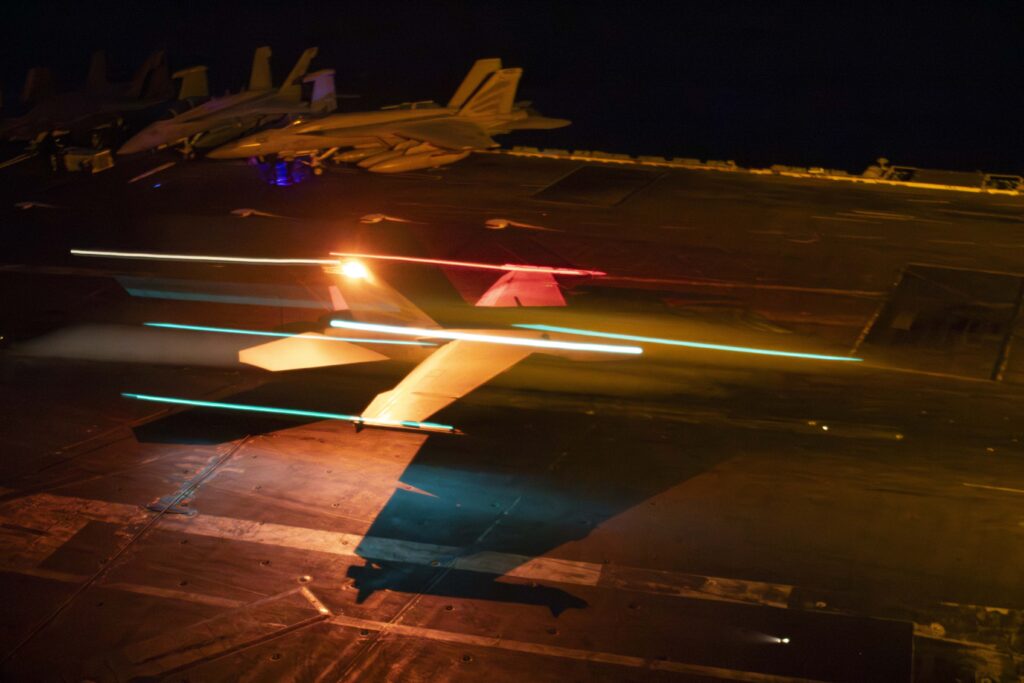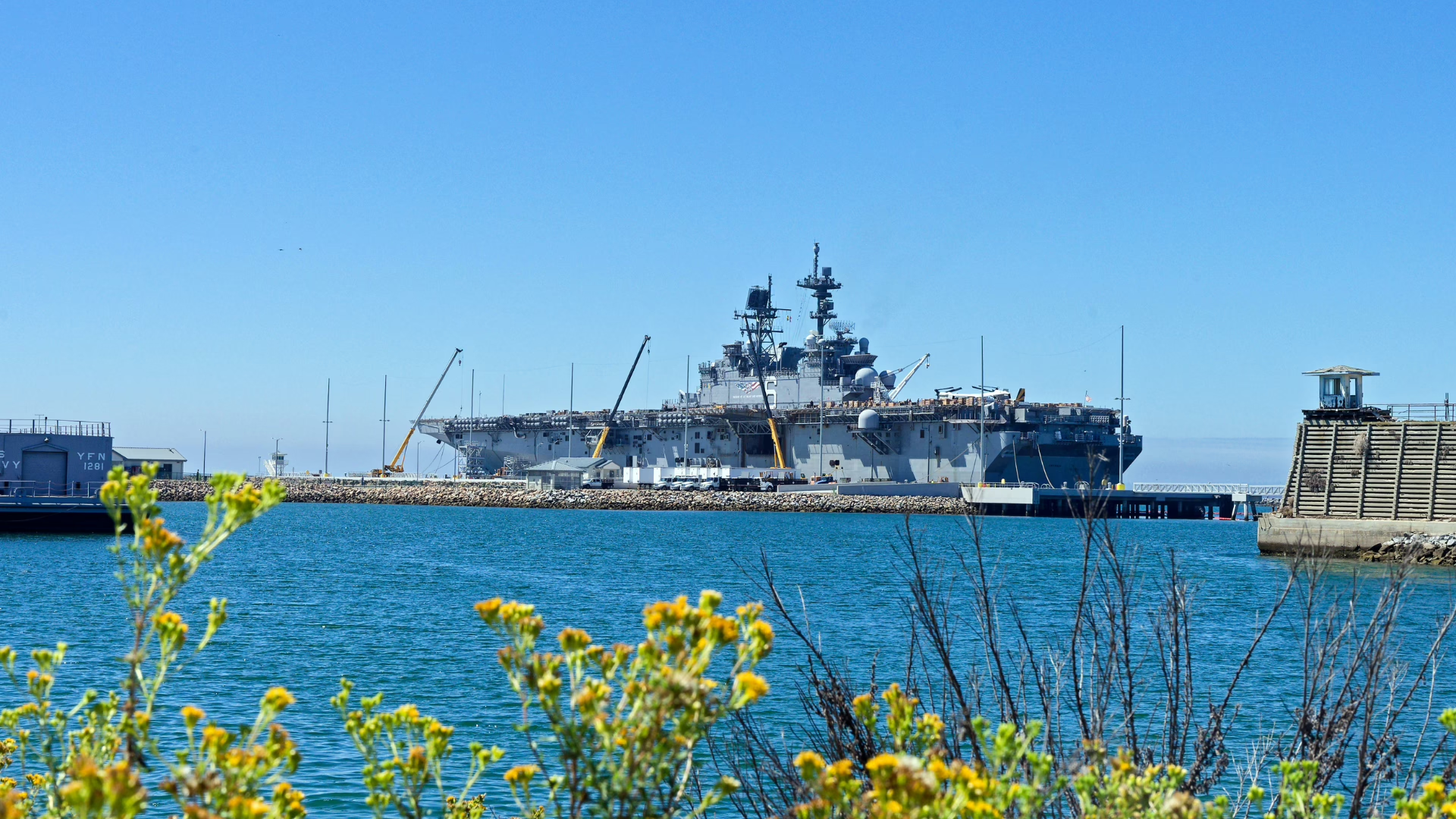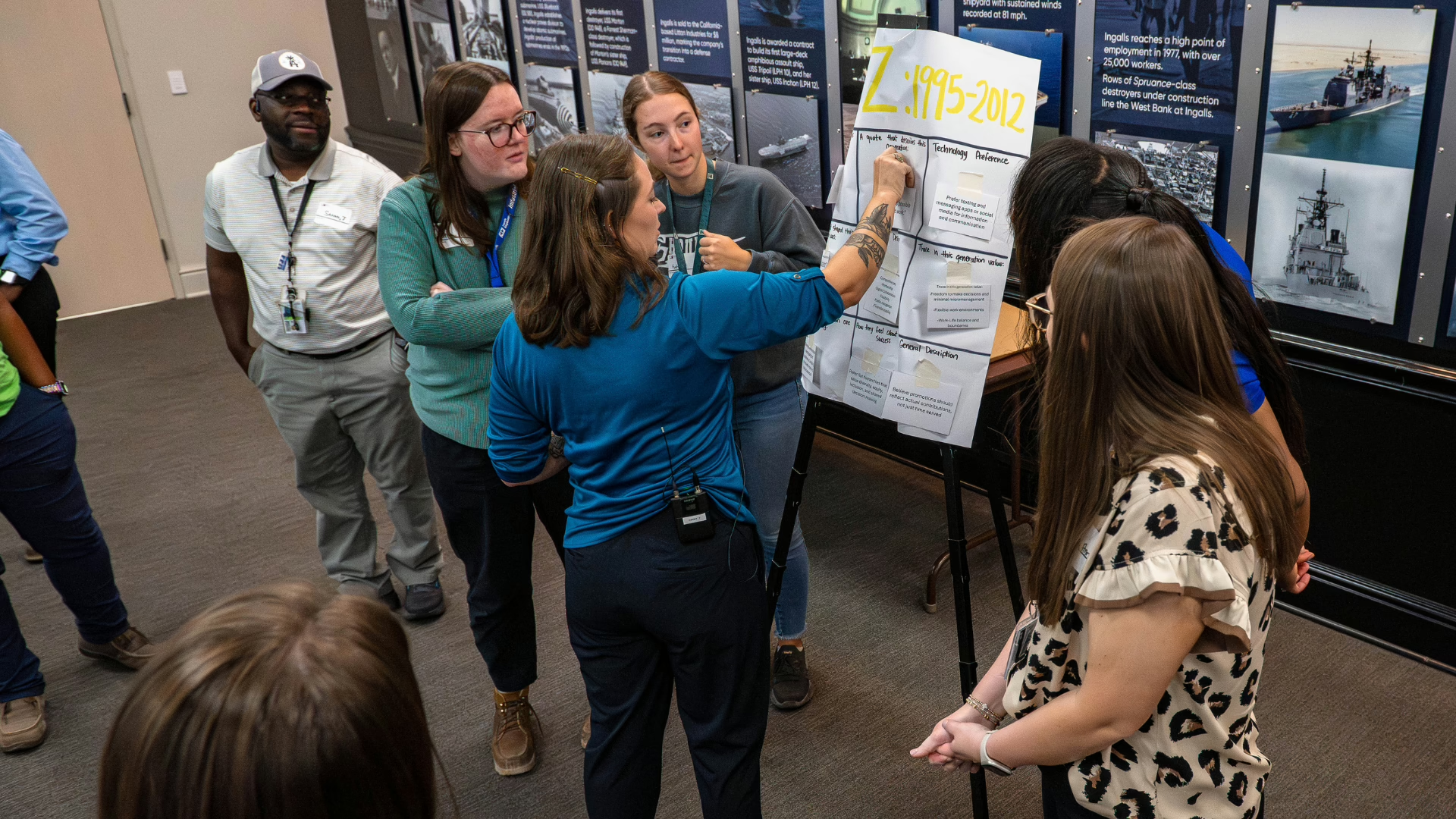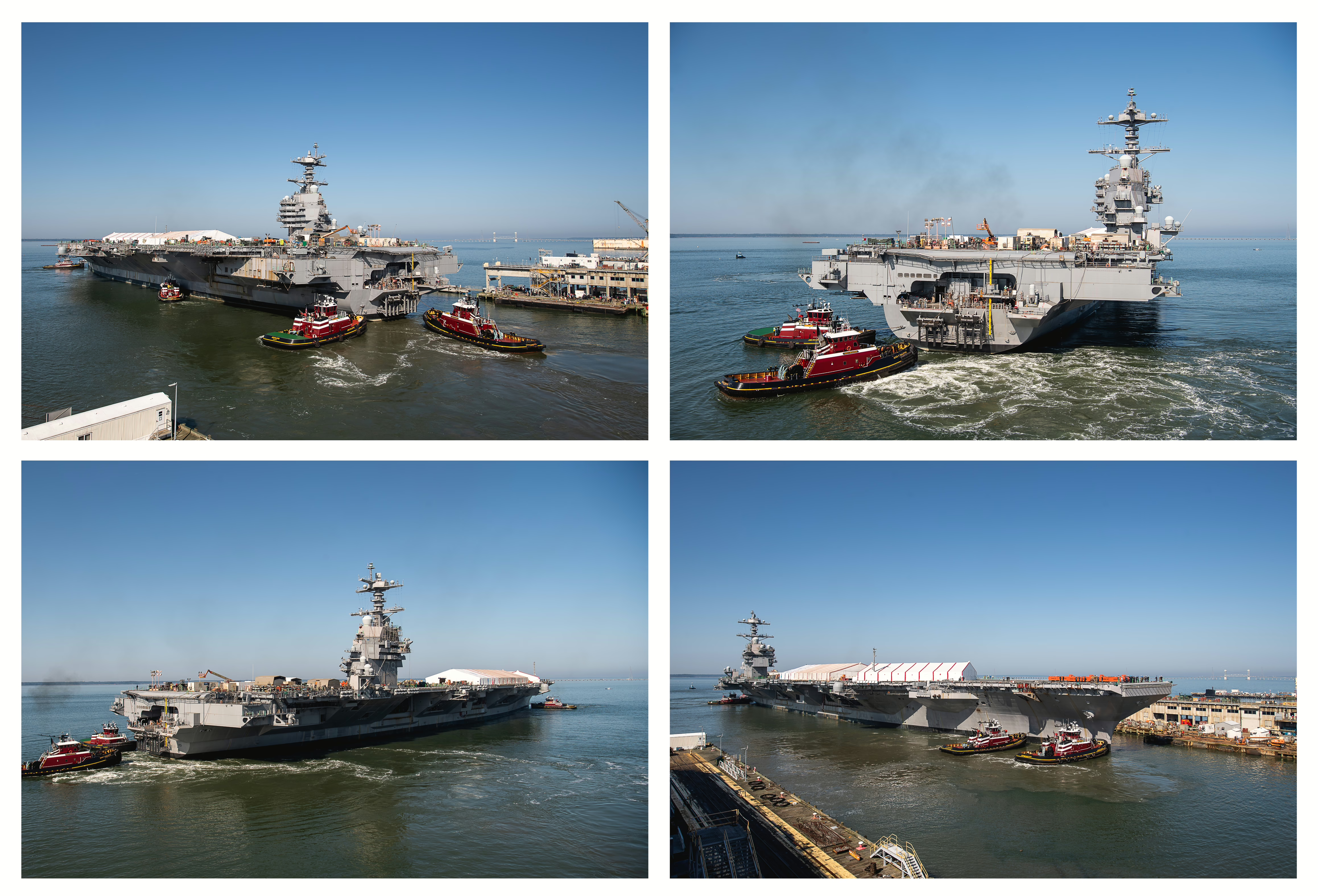Photo caption: PACIFIC OCEAN (May 21, 2024) An F/A-18F Super Hornet from Strike Fighter Squadron (VFA) 41 lands on the flight deck of the Nimitz-class aircraft carrier USS Abraham Lincoln (CVN 72). Abraham Lincoln, flagship of Carrier Strike Group (CSG) 3, is underway conducting integrated exercises to bolster strike group readiness and capability in the U.S. 3rd Fleet area of operations. (U.S. Navy photo by Mass Communication Specialist 2nd Class Michael J. Cintron)
May 31, 2024
HII’s Weekly News Digest is compiled every Friday by the Corporate Communications team to summarize and highlight news stories of significance to the company.
Chris Kastner: HII Is Tackling Labor Challenges: HII President and CEO Chris Kastner joined CNBC’s Morgan Brennan on Friday morning aboard the Intrepid (CV 11) during New York’s Fleet Week. They talked about attracting and retaining workers, the state of the supply chain, using data in its businesses and how the company is using artificial intelligence to improve efficiency. Inside Defense reported on Thursday that Kastner told participants at Bernstein’s 40th Annual Strategic Decisions Conference that HII is working with the Navy on test programs that incentivize worker retention in specific shipbuilding programs. Meanwhile, Defense News reported on Tuesday that HII is broadening its search for skilled craft workers through a national “Build It” campaign. Xavier Beale, vice president of human resources at HII’s Newport News Shipbuilding division, said the company is working on digital outreach and also sending people across the country to connect with local workforce councils and trade associations to find experienced workers.
Wicker Proposes $55 Billion Defense Spending Boost: Politico reported on Wednesday that Sen. Roger Wicker, the top Republican on the Armed Services Committee, is pushing an aggressive plan to include an additional $55 billion in defense spending above what President Joe Biden has requested for the coming fiscal year. Promoting the proposal as a “generational investment” needed to keep pace with worldwide threats, Wicker wants to grow U.S. defense spending to 5% of GDP and pour more money into shipyards to quickly build toward a 355-plus ship fleet. His framework urges the Navy to lock in a multiyear deal to purchase several amphibious ships. And it recommends creating a large-scale industrial base program for warships. The plan also proposes boosting submarine shipyards to build three attack subs per year. And it calls for speeding up purchases of unmanned surface and undersea vessels. Defense News reported on Wednesday that Wicker is urging the Navy to embark upon a comprehensive industrial base investment strategy that will require around $20 billion over the next five years. These funds would go toward “extensive funding for workforce development, supply chain resiliency, long-lead item production, development and insertion of additive manufacturing techniques, supplier base diversification and shipyard modernization and expansion.” Wicker is also calling on the Navy to “begin work on a fifth nuclear shipyard, which will likely cost over $20 billion.”
GAO: Design Instability Contributed To Frigate Delays: Inside Defense reported on Wednesday that the Government Accountability Office is pointing to the Navy’s decision to begin construction of the lead Constellation-class frigate before completing the ship’s design as causing the current “standstill” in construction and the projected three-year delivery delay for the lead ship. The GAO made recommendations to help overcome delays, including “that the Navy restructure its design stability metric to measure progress based more on the quality than quantity of design documents; use the improved metric to assess the design stability before beginning construction of the second frigate; incorporate additional land-based testing into the frigate test plan; and identify opportunities to further incorporate leading practices for product development into the frigate acquisition strategy.” Assistant Navy Secretary for Research, Development and Acquisition Nickolas Guertin agreed to fully adopt those four of these recommendations, while “partially concurring” with the call for the service to update the frigate’s Test and Evaluation Master Plan. USNI News reported on Wednesday that the GAO reports the frigate might not have the weight margin for required modernization to meet its expected service life. The “unplanned weight growth” of 10% or more from June 2020 to October of 2023 on the Constellation-class frigate may require the Navy to shed propulsion capability and in turn reduce the ship’s top speed to allow the warships to have the margin the service needs for future upgrades.
| Social Media Highlight Of The Week
Posted Wednesday to HII’s Facebook page: “HII’s commitment to giving back to the community endures. Our #NewportNewsShipbuilding division joined elected officials and community leaders today at a groundbreaking for the 22nd home shipyard volunteers have constructed in partnership with Habitat for Humanity Peninsula and Greater Williamsburg since 2002. Learn more about how shipbuilders will volunteer their time, and who this build is dedicated to, by reading more on HII.com.” |
Army Splitting Signals Intelligence, Electronic Warfare Platform: Defense Scoop reported on Thursday that the Army intends to break up its integrated signals intelligence and electronic warfare platform into two distinct variants. The Terrestrial Layer System-Brigade Combat Team was designed as the first integrated signals intelligence, cyber and EW platform devised roughly six years ago. It has been described as a key enabler of Army priorities that will support multi-domain operations. However, outside experts had voiced concern with the existing setup given the highly classified nature and authorities that come with signals intelligence and the issues associated with putting that on a single platform as electronic warfare tools. The Army will now prototype variants and a decision will be made determining if one or both of those platforms is mature enough to go into a rapid fielding or transitions into a major capability acquisition. Currently, the more stable of the two systems is the signals intelligence system from a requirements and platform standpoint, which would simply require the removal of the electronic warfare payload from the platform.
HII’s Weekly News Digest is produced by HII’s Corporate Communications team and posted to Homeport every Friday.
Please note: Social media is blocked on HII computers for most employees. Employees are encouraged to visit HII’s Facebook page and other social media sites on personal time and from non-work devices.
Send feedback to: HII_Communications@hii-co.com.













